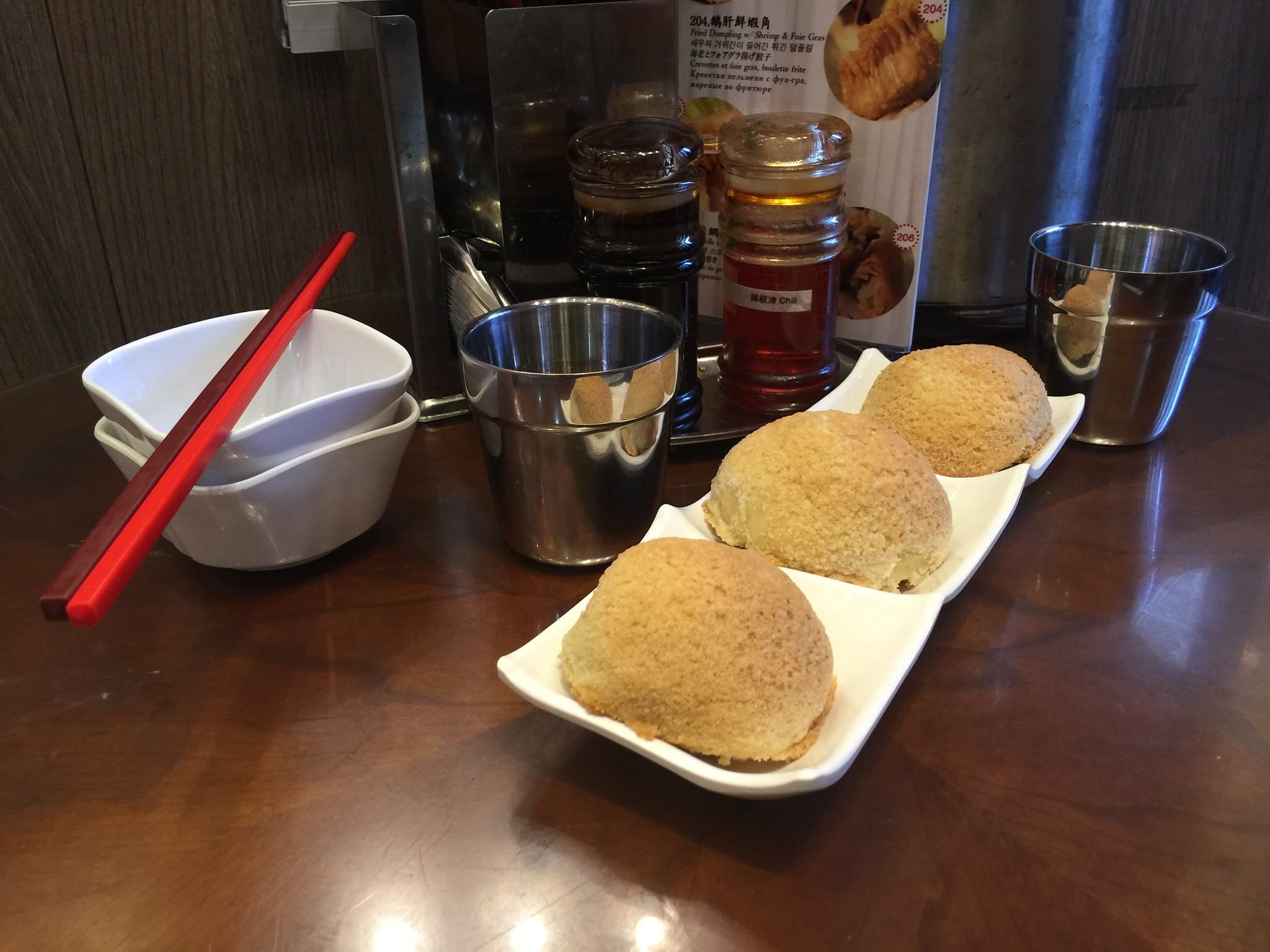
About the famous bun that has no pineapple at all.
The pineapple bun, or bo lo bao in Cantonese, is one of Hong Kong’s most iconic sweet buns that is now famous all around the world. Learn the pineapple bun history and its possible origins.
Pineapple Bun History & Origin Stories
What’s a Pineapple Bun?
A pineapple bun is a soft, fluffy bun topped with a sweet crust on the outside. It is made from flour, oil, sugar, and eggs. And no pineapple at all.
The name comes from the crunchy, golden, brown top and how it resembles the look and texture of a pineapple’s epicure, the tough outer skin of the fruit.
The bao is traditionally served with milk tea for breakfast or afternoon snack. You can find similar sweet, crusty buns in Japan with their melonpan and in Mexico with their concha.
Western Influence
A loose history of the bo lo bao describes how the Chinese sweet soft bread had long existed as it was traditionally steamed. With Western influence, particularly with the presence of Portuguese in Macau and British in Hong Kong, locals looked for a western-style bun. They craved to pair something with milk tea as their own version of afternoon tea.
Tied to the History of Chinese-Mexicans
A more detailed history of the pineapple bun also tells the history of Chinese-Mexicans of the mid-20th century.
In the 19th century, migrants from Guangdong sought better fortunes overseas. Most went across the Pacific to Canada and the US. Fewer went to Mexico where they were more welcomed in comparison to their counterparts in the US who faced racist laws and restrictions. In Mexico, they could intermarry with Mexican women as the two cultures found similarities when it came to family values.
In the late 1930s, Mexicans were forced out of the US because of increasing immigration bans. As a result of the influx of Mexicans going back home, the Chinese in Mexico were ordered to deport as well. Most went back home to Guangdong while others sought the familiarity of western culture and settled in Macau and Hong Kong.
How does this all relate back to the pineapple bun?
In 1946, the Ng family, who were expelled from Mexico, opened a Hong Kong-style cafe in Hong Kong’s Shanghai Street. There, they made the Mexico bun as a tribute to the concha. And from that, the pineapple bun was first introduced to Hong Kong.
The Popularity of the Pineapple Bun
The pineapple bun gained popularity in Hong Kong from the 40s and increasingly so by the decade.
As the bao was introduced around the world, so did its variations. Traditionally, the bun is cut in half and filled with a slab of butter. Today, you can find it filled with cream, coconut, red bean, and even char siu (look at the success of Tim Ho Wan).
The pineapple bun reached the height of its popularity and fame in 2014 when the Hong Kong government officials named the bo lo bao as an “intangible cultural heritage.”
Sign up for my newsletter on the sidebar for blog updates and my travel insider tips! And, check out my vlogs on YouTube!


